Water Quality Impacts on Aquatic Macroinvertebrates
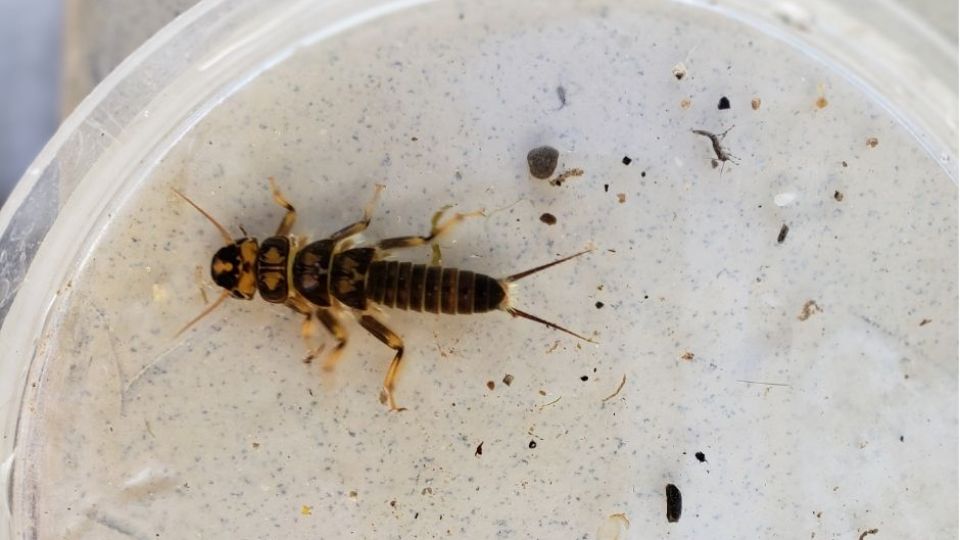
What Are Aquatic Macroinvertebrates?
The easiest way to understand this term is to break it down.
water linesAquatic = living or growing in water, an aquatic plant or animal
Aquatic = living or growing in water, an aquatic plant or animal
microscopeMacro = big, or large enough to see without using a microscope
Macro = big, or large enough to see without using a microscope
water bugInvertebrate = an animal without a backbone
Invertebrate = an animal without a backbone
When you put it all together, aquatic macroinvertebrate means water animals without a backbone that are big enough to see with our naked eye. These tiny animals live in streams, lakes, and ponds and include many types of insects as well as other animals such as worms, mollusks, and tiny crustaceans.
Macroinvertebrates have three body segments:
- Head: Contains the head and antennae.
- Thorax: The midsection of the body is called the thorax. It contains the jointed legs and wings.
- Abdomen: The lower section of the body.
Life Cycle of an Aquatic Macroinvertebrate
All aquatic macroinvertebrates start life as eggs. Some aquatic macroinvertebrates spend their entire life in water, such as water boatmen and snails. They don’t change much as they grow – they only get bigger (like humans do). Others, such as dragonflies and mayflies, spend part of their life in the water and part on land. The immature phases (larvae and nymphs) live in the water, then they metamorphose (transform into adults) and spend the rest of their life on land. In many cases, aquatic macroinvertebrates live in the water for months to several years and are adults for a very short time.
For example, dragonfly larvae can live in water for months to several years, but the adults survive on land for a few short weeks. During their adult phase, dragonflies mate and lay their eggs in or near water, so the life cycle can continue. Dragonfly larval and adult forms do not look alike, but they are both skilled predators that survive well underwater and on land.
Dragonfly larva
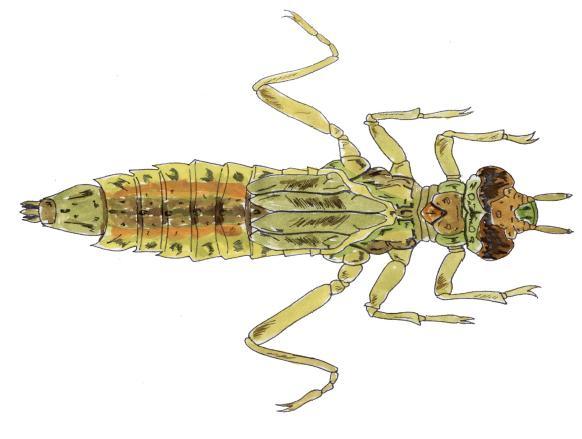
Dragonfly adult
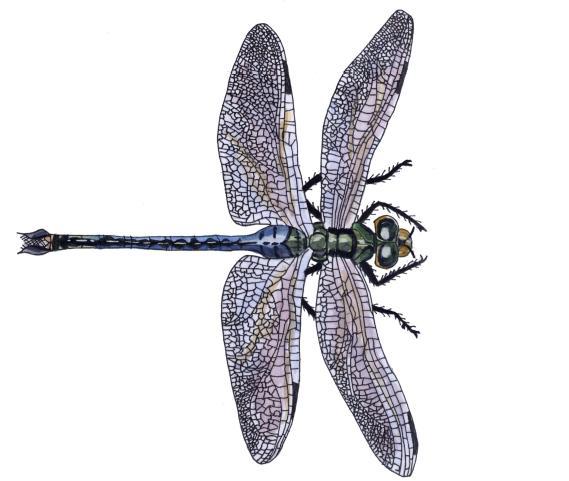
Why Care About Aquatic Macroinvertebrates?
Aquatic macroinvertebrates live in many different types of aquatic habitats. Some live in fast moving streams, consuming leaves, twigs, and other plant material that falls into the water. Others live in wider, sunnier rivers or shallow ponds, scraping algae off rocks or on the surfaces of large aquatic plants. Many are predators, and prey upon other macroinvertebrates. Some live within the soft sediments at the bottom of lakes and ponds and others capture food that is drifting along in the current. In all these settings, macroinvertebrates provide an important food source for fish and other predators. Because different types of macroinvertebrates tolerate different stream conditions and levels of pollution, their presence or absence is used to indicate clean or polluted water. 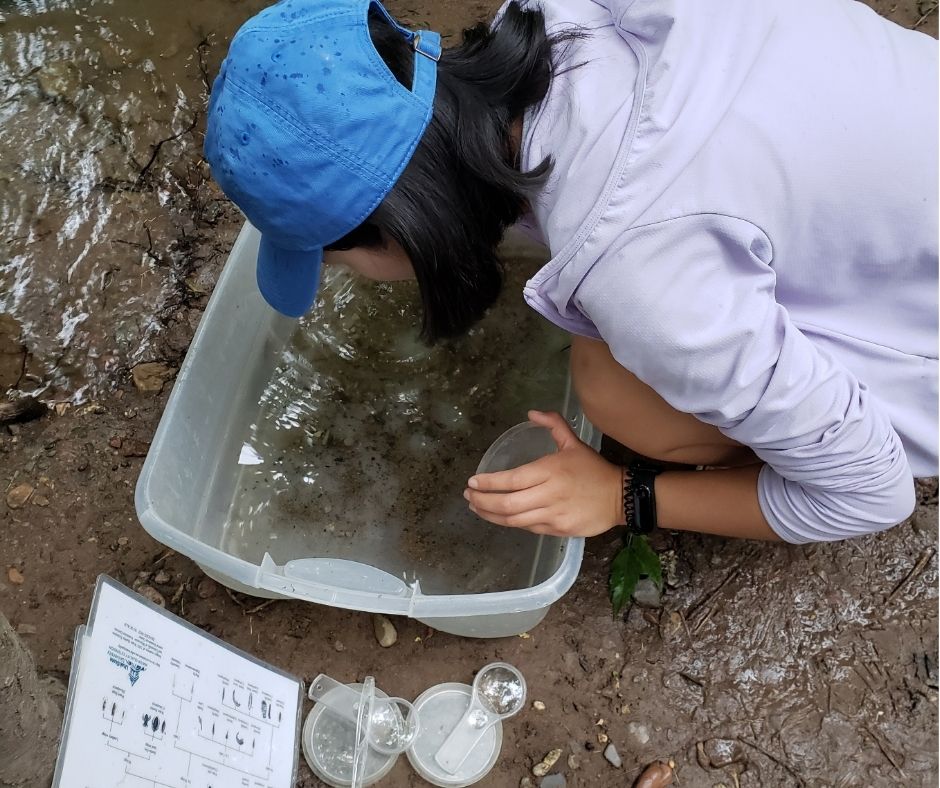
Can macroinvertebrates indicate water quality?
Sometimes, it is easy to tell if a stream or pond is polluted. Strange colors, smells, and dead fish are often indicators of poor water quality, but scientists need to know about water quality problems long before this point. Some of scientists most helpful partners in detecting decreasing water quality are aquatic macroinvertebrates because they react quickly to changing water conditions.
To evaluate the health of waterways, biologists look at the types of macroinvertebrates who live there. Different species have different tolerance levels to pollution. Some aquatic organisms are more sensitive to pollution or poor water quality, meaning they cannot survive or reproduce in poor water conditions, while others are more tolerant of polluted water. When scientists see many of the more sensitive macroinvertebrates in a water body, it is a good sign that the water is clean, or clean enough to support diverse life (but not clean enough to drink!). However, the absence of sensitive macroinvertebrates in a water body does not necessarily indicate the water quality is poor. Other natural factors (such as temperature, flow, sediment, and more) may explain their absence.
Pollution Tolerance Level
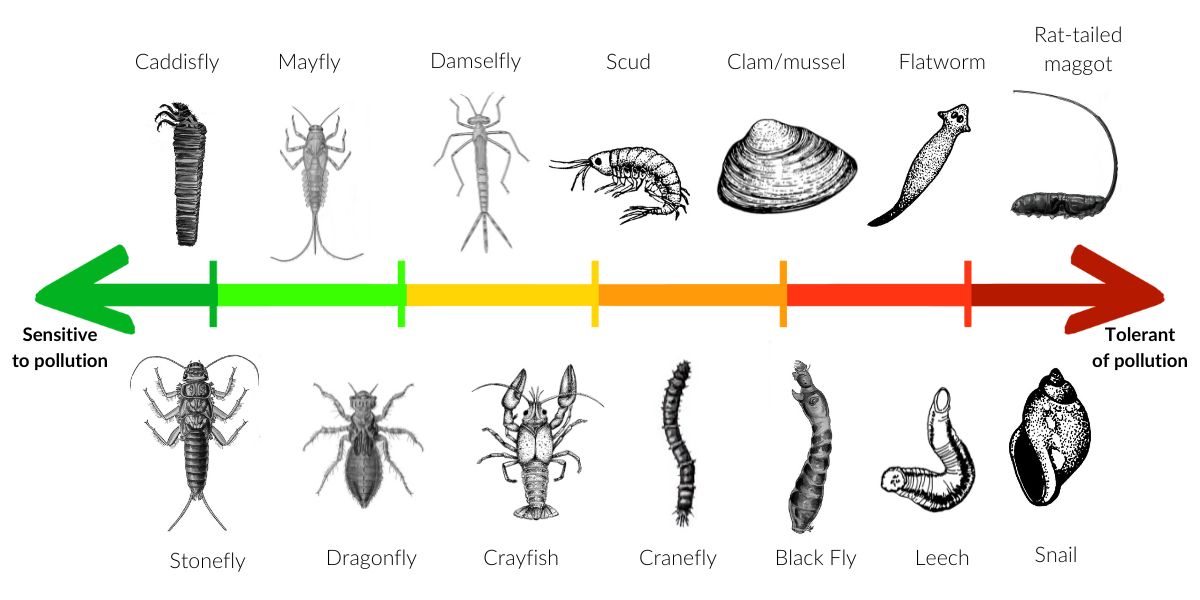
This scale is intended for general reference only. Water conditions change constantly. Some macroinvertebrates may handle pollution better than others depending on the location and natural factors.
Factors That Influence Macroinvertebrate Health
Many natural and human-influenced factors can influence the presence, absence, and health of aquatic macroinvertebrates.
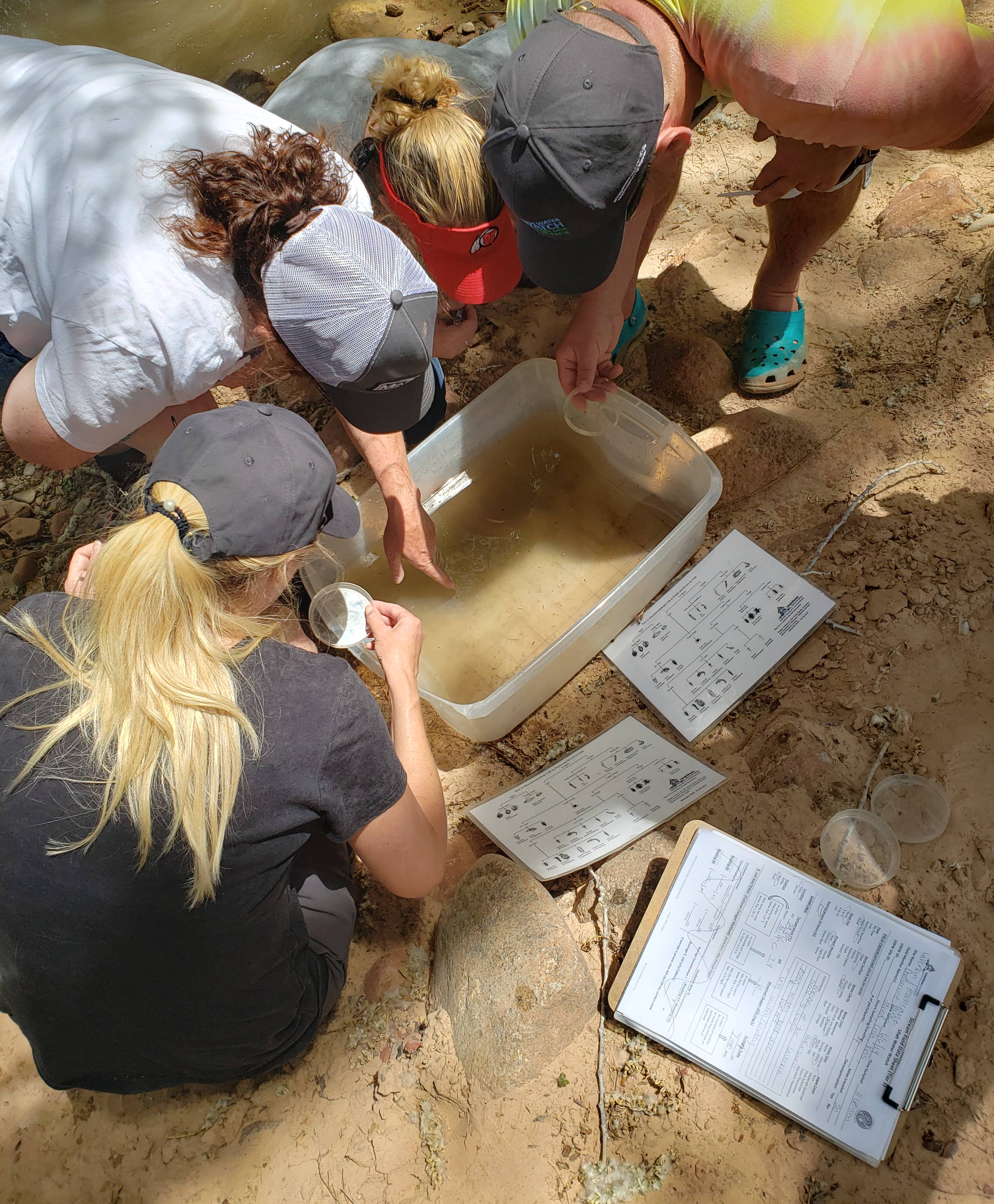
- Seasons: Life histories of invertebrates are tied to food availability. For example, macroinvertebrates that eat algae are most abundant in the summer when algae production is at its highest.
- Dissolved Oxygen: Macroinvertebrates breathe oxygen that is dissolved in the water. In their immature stage, many species require high levels of dissolved oxygen to survive.
- Substrate: The materials found at the bottom of a waterbody will affect the types of macroinvertebrates that live there.
- Nutrient enrichment: Added nutrients from wastewater, fertilizer, or agricultural practices can accelerate the growth of algae and other plants. When plants die, decomposition by microorganisms can use up dissolved oxygen in the water.
- pH: Industrial pollutants and stormwater runoff from urban environments and human activities can change the pH levels in the water. Low pH can weaken shells and exoskeletons and kill macroinvertebrates.
- Removal of riparian vegetation: The vegetation growing on the banks of a waterbody provide food and habitat for macroinvertebrates. Removing this vegetation impacts their survival.
Adaptations for Survival
Most aquatic macroinvertebrates make their home in the rocks, leaves, and sediment of a water body. These water animals have many special adaptations that allow them to live in different environments. An adaptation is a change in structure, function, or behavior that helps a living organism better survive in its environment. These adaptations can be a physical change, such as a body part, or a behavioral change like building a case out of sticks for protection and shelter.
Aquatic macroinvertebrates that live in rapidly-moving water may have physical adaptations like flat, streamlined bodies that move well in fast water or specialized feet that help them hold onto rocky or hard substrates (organic materials at the bottom of a stream or lake), such as hooked feet or suction cups. Macroinvertebrates that make homes deep in muddy substrates may have adaptations for low oxygen environments, such as air tubes or oxygen trapping hemoglobin (red protein that helps transport oxygen in the blood) in their tissue.
Basic aquatic macroinvertebrate adaptations:
- Antennae: Used for sensing food and surroundings.
- Specialized mouth parts: Help with eating food and are adapted based on their diet.
- Specialized feet: Used to collect and eat food as well as hold onto substrate in riverbeds and ponds.
- Compound eyes: Help detect motion and see in all directions.
- Gills: Help with breathing dissolved oxygen in the water.
- Tails: Used for swimming and steering.
References
- Aquatic Macroinvertebrates. n.d. Water Quality. Utah State University Water Quality Extension.
- Bugs Don't Bug Me Manual. 2011. Utah State University Water Quality Extension.
- Macroinvertebrate Mix and Match. 2011. Utah State University Water Quality Extension.
- Houskeeper, L. and Braithwaite, H. Water Quality and Aquatic Macroinvertebrate [interpretive sign materials]. 2021.
Authors
Lauren Houskeeper, Water Quality Programs Assistant; Hope Braithwaite, Extension Assistant Professor for Watershed Quality; Nancy Mesner, Professor Emeritus



